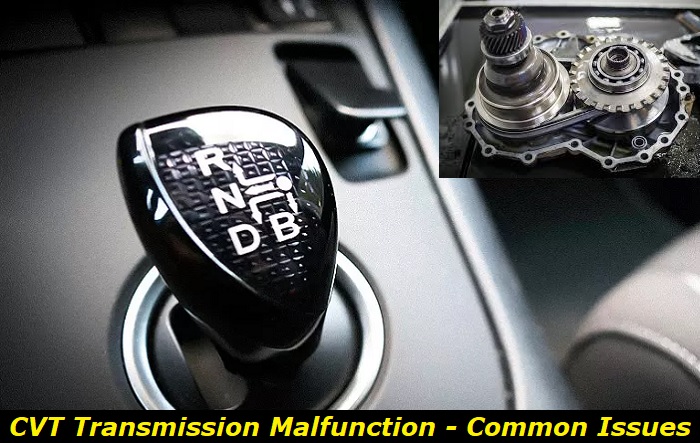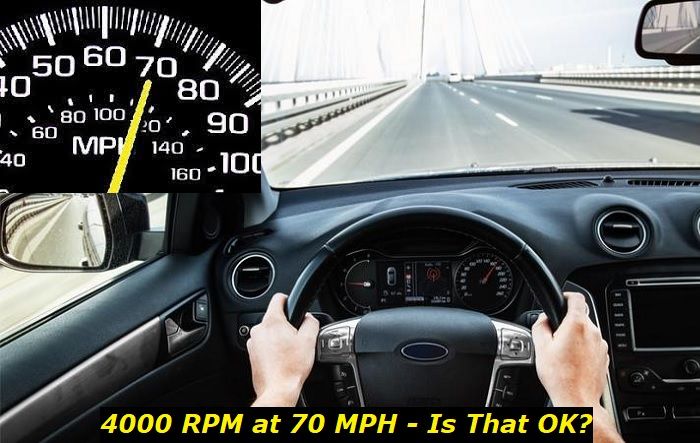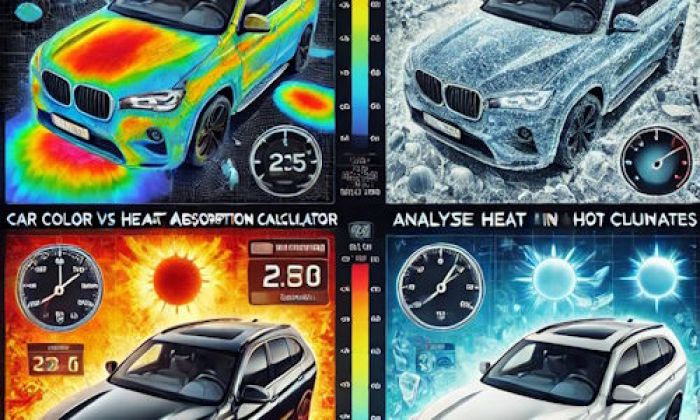Continuously Variable Transmissions (CVTs) have become increasingly popular in recent years as a replacement for traditional automatic transmissions. But CVT malfunctions can cause all sorts of problems, from car stalling to transmission failure. In this article, we'll explore how and why CVT can have a problem and what you can do if your car does experience a malfunction.
CVT malfunctions highlights
- Average mileage:120,000-140,000 miles
- How serious it is:Urgent problem
- Possibility of repairs:Usually impossible
- Price for repair:$1,000-$5,000
- Labor time:10-18 hours
- Can you drive?Usually no
- Common reasons:bad fluid, poor maintenance, towing, mountain driving, off-roading, reaching the death time of the transmission.

What is a CVT, and what does it do in a car engine
In a traditional automatic transmission, the engine spins a series of gears that convert its rotational energy into linear motion. These gears are connected to one another by a number of different mechanisms and moving parts, including bearings, synchronizers, clutches, and seals. In contrast, CVT transmissions have just two main components: an input pulley and an output pulley.
Each of these is connected by a long, flexible belt or chain that can move in and out as needed to adjust itself based on the speed of the engine, thereby providing an infinite number of gear ratios between the engine's peak power speed and its idle speed. This enables CVTs to provide better fuel economy, smoother performance, and a quieter ride than traditional transmissions.
Why are CVTs prone to problems?
CVTs can fail for a variety of reasons. The most common problems, however, are debris buildup in the transmission system and improper lubrication. The components of a CVT rely on very tight tolerances to operate properly, which means that not only must there be sufficient moving parts and lubrication, but there must also be a solid seal between the CVT and its surrounding components.
In time, however, this seal can degrade, particularly in areas that have high heat outputs (such as where the exhaust pipe connects to the engine), creating small leaks that allow small pieces of dirt or grime to slip through and accumulate within the transmission's moving parts. These can cause all sorts of problems, from misalignment to excessive friction (which can affect the belts or chains and cause them to slip), ultimately leading to failure.
What are the most common problems associated with CVT transmission?
1) Failure to engage
Generally, this problem can be traced back to one of three reasons: lack of lubrication or insufficient lubrication, improper installation, or damage caused by overuse. If your car won't go forward and it is turning but not moving, there could be a number of components that are not properly aligned.
For example, those seals we discussed earlier may be faulty if there is dirt or grime building up on the valves and gears. If this is the case, you will need to have an expert technician inspect your CVT as soon as possible in order to prevent further damage from occurring.
2) Fluctuating speed
Another common problem associated with CVTs is that the transmission can drop out of gear unexpectedly, resulting in sudden speeds and fluctuations. This is often caused by debris buildup as well, but it could also be due to a faulty input/output pulley or damaged belt/chain.
In any case, if you notice this issue happening with your car, you should get in touch with a CVT repair service right away and have your transmission inspected. Some car owners will attempt to solve the problem themselves by simply re-seating the input/output pulley system.
However, this doesn't often work as well as expected because although it may allow for a slight shift in gear speed, it will not address the underlying issue entirely.
3) Acceleration problems
Acceleration issues are most often caused by a faulty pulley system as well - but not always. Sometimes the CVT's transmission fluid is not properly lubricating the belts or chains, or there may be a disruption in the flow of this fluid that is causing friction and reducing overall performance. In any case, it's never a good idea to let problems with your CVT go unaddressed.
4) Excessive noise
If your CVT is making a loud whining or grinding sound, this is usually an indication of transmission failure. In most cases, the belt/chain that connects your input and output pulleys has snapped and needs to be replaced by a professional mechanic as soon as possible. By leaving this issue unaddressed, you run the risk of causing more extensive damage to your transmission, which will likely require an even more expensive repair.
Finally, if your CVT is making a high-pitch squealing sound, this could be indicative of a loose pulley or worn-out seals and lubrication. Again, in order to get to the bottom of the issue and prevent it from getting worse, you should have your CVT system inspected as soon as possible.
5) Sputtering and stalling
If your car is sputtering and stalling out regularly, this could be a sign that there is a clog in the transmission system. In order to remedy this problem, you will need to have your system flushed, or you may even need to have the entire unit replaced.
6) "Shudder" or vibration
If you notice that your car is shuddering, vibrating, or jerking while driving at certain speeds and shifting gears, this could be due to an imbalance within the CVT system. This may be caused by damage to the input/output pulley system or a faulty belt/chain. To remedy this issue, you will need to have your car inspected by a professional mechanic, who will be able to determine the root cause of the problem and provide you with an appropriate course of action.
7) The engine is revving at an unusually high RPM
If you notice that your vehicle engine is revving at a higher-than-normal RPM while driving, this may be an indication of misalignment or other mechanical issues with your CVT system. This could be caused by a wide range of factors, including damaged or misaligned pulleys and belts, clogs or debris buildup, and issues with lubrication or fluid levels.
8) Problems with the control module
In some cases, a problem with the control module (which is also referred to as an ECU) may be the root cause of a failing CVT. The control module is responsible for managing various aspects of the transmission, including fluid flow, driving speed, and gear selection. If this component is damaged or not functioning properly, it could lead to the malfunctioning of the CVT and a variety of other problems.
9) Overheating
This is another common symptom of CVT failure, and it's usually an indication that the fluid within the transmission is not flowing properly. The good is that this is a temporary problem that can be easily remedied by simply checking the fluid levels and adding more if necessary.
In order to prevent any of these CVT problems from happening, it is crucial that you follow all recommended maintenance intervals and keep up with regular oil changes. Additionally, be sure to avoid over-revving your engine and driving fast in low gear, as this can also put undue strain on your CVT and ultimately cause it to fail.
By taking these simple steps, you can help ensure the longevity of your transmission and make sure that it works smoothly for years to come.
Some tips on how to prevent or minimize the chances of your CVT from malfunctioning
Let's take a closer look at some of the best practices and strategies for preventing CVT problems.
- Always make sure that your car is properly maintained and serviced, following all recommended maintenance schedules and using high-quality lubricants and oils.
- Avoid over-revving or revving in low gear, as this can cause excessive wear to your CVT system and potentially lead to its early failure.
- Keep a close eye on your transmission for any signs of problems, such as sputtering, stalling, or unusual noises. If you notice anything out of the ordinary, be sure to have your vehicle inspected by an expert technician right away.
- Park your car in a cool, dry place when it's not in use, and avoid driving on very hot or cold days. These types of weather conditions can lead to premature wear and tear on the CVT system.
- Take caution when driving over bumps or potholes, as this can also put extra strain on your transmission and cause it to fail. When possible, avoid these types of road hazards to ensure the optimal performance and longevity of your vehicle.
Bottom Line
CVT systems are a common and highly effective type of transmission used in modern cars. However, it is important to be aware of the potential for problems, especially when your car is not properly maintained or you drive in severe weather conditions.
By following the tips above, however, you can help minimize your chances of experiencing CVT issues and enjoy a smooth driving experience for many years to come.
About the authors
The CarAraC research team is composed of seasoned auto mechanics and automotive industry professionals, including individuals with advanced degrees and certifications in their field. Our team members boast prestigious credentials, reflecting their extensive knowledge and skills. These qualifications include: IMI: Institute of the Motor Industry, ASE-Certified Master Automobile Technicians; Coventry University, Graduate of MA in Automotive Journalism; Politecnico di Torino, Italy, MS Automotive Engineering; Ss. Cyril and Methodius University in Skopje, Mechanical University in Skopje; TOC Automotive College; DHA Suffa University, Department of Mechanical Engineering






Add comment